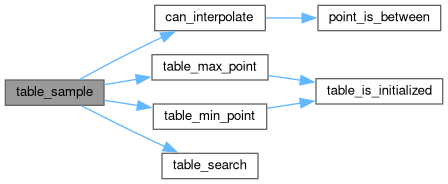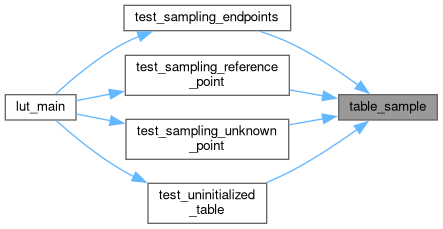#include <stdbool.h>#include <stdint.h>
Go to the source code of this file.
Classes | |
| struct | point |
| struct | table |
Macros | |
| #define | TABLE_CAPACITY 64 |
Functions | |
| int | point_compare (const void *a, const void *b) |
| Compares two points by input. More... | |
| bool | point_is_between (const point *min, const point *max, float in) |
| Determines if the input value is between the input of two points. More... | |
| bool | table_init (table *table, uint16_t count) |
| Initializes the table. More... | |
| bool | table_add_reference_point (table *table, float in, float out) |
| Adds a reference point to the table. More... | |
| bool | table_is_initialized (table *table) |
| Checks if the table has been fully initialized, with all reference points added. More... | |
| const point * | table_min_point (table *table) |
| Retrieves the point in the table with the least input value. More... | |
| const point * | table_max_point (table *table) |
| Retrieves the point in the table with the greatest input value. More... | |
| bool | table_can_sample (table *table, float in) |
| Checks if the input input is valid for the table. More... | |
| bool | table_sample (table *table, float in, float *out) |
| Samples a output value from the table for an input value. More... | |
Macro Definition Documentation
◆ TABLE_CAPACITY
Function Documentation
◆ point_compare()
| int point_compare | ( | const void * | a, |
| const void * | b | ||
| ) |
Compares two points by input.
- Parameters
-
a The first point to compare. b The second point to compare.
- Returns
- A negative integer if the first point is before the second point, zero if the first point is equal to the second point, or a positive integer if the first point is greater than the second point.
Definition at line 6 of file LUT.c.

◆ point_is_between()
Determines if the input value is between the input of two points.
- Parameters
-
min A point with an input less than the input of max. max A point with an input greater than the input of min. in An input value to test with the two points.
- Returns
- True if the input value is between the minimum input and maximum input.
Definition at line 16 of file LUT.c.
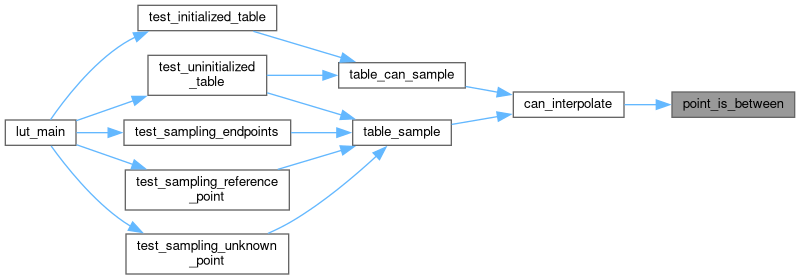
◆ table_add_reference_point()
| bool table_add_reference_point | ( | table * | table, |
| float | in, | ||
| float | out | ||
| ) |
Adds a reference point to the table.
- Parameters
-
table A pointer to the table to add the point to. in The input ("from") value. out The output ("to") value at the input value.
- Returns
- True if the reference point was added to the table.
Definition at line 79 of file LUT.c.


◆ table_can_sample()
| bool table_can_sample | ( | table * | table, |
| float | in | ||
| ) |
Checks if the input input is valid for the table.
- Parameters
-
table A pointer to the table to check. in The input value to check.
- Returns
- True if the input value is valid for the table.
Definition at line 107 of file LUT.c.


◆ table_init()
| bool table_init | ( | table * | table, |
| uint16_t | count | ||
| ) |
Initializes the table.
- Parameters
-
table A pointer to the table to initialize. count The number of reference points in the table.
- Returns
- True if the table was successfully initialized.
Definition at line 31 of file LUT.c.

◆ table_is_initialized()
| bool table_is_initialized | ( | table * | table | ) |
Checks if the table has been fully initialized, with all reference points added.
- Parameters
-
table A pointer to the table to check.
- Returns
- True if the table has been fully initialized.
Definition at line 53 of file LUT.c.
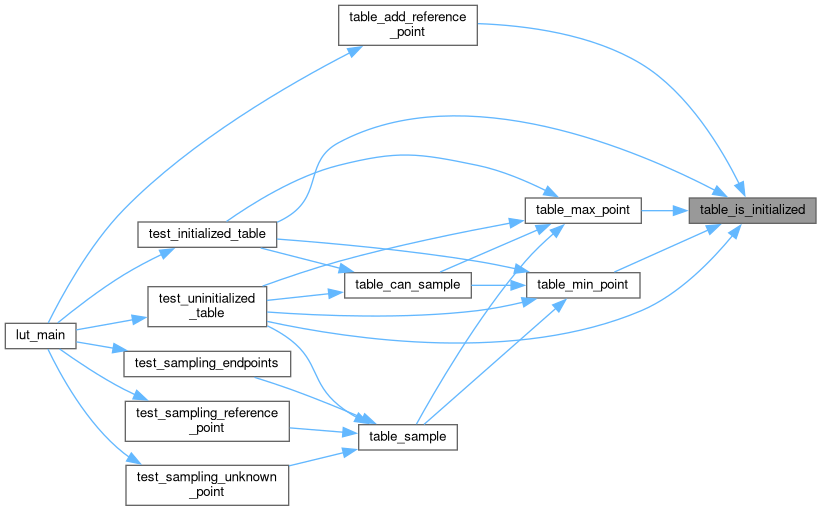
◆ table_max_point()
Retrieves the point in the table with the greatest input value.
- Parameters
-
table A pointer to the table.
- Returns
- If there is a maximum point, a pointer to the maximum point, otherwise NULL.
Definition at line 101 of file LUT.c.

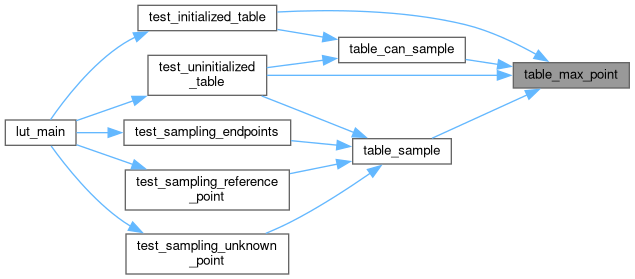
◆ table_min_point()
Retrieves the point in the table with the least input value.
- Parameters
-
table A pointer to the table.
- Returns
- If there is a minimum point, a pointer to the minimum point, otherwise NULL.
Definition at line 95 of file LUT.c.

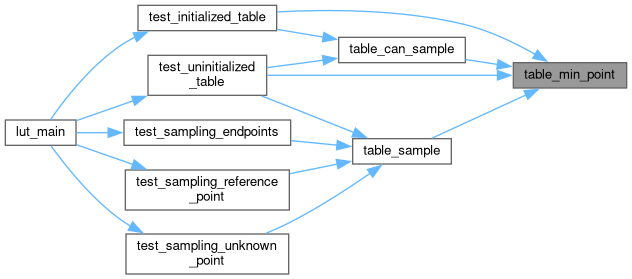
◆ table_sample()
| bool table_sample | ( | table * | table, |
| float | in, | ||
| float * | out | ||
| ) |
Samples a output value from the table for an input value.
- Parameters
-
table A pointer to the table to sample. in The input value to sample. out A pointer to the destination of the output value.
- Returns
- True if the output value was written, otherwise false.
Definition at line 137 of file LUT.c.
